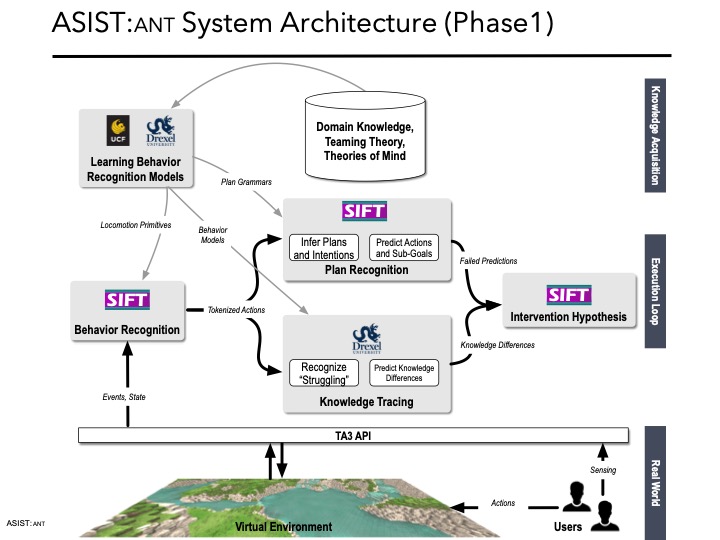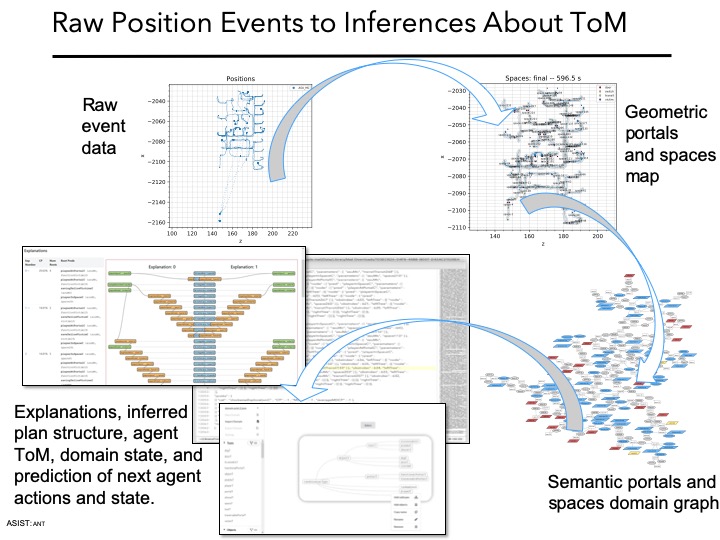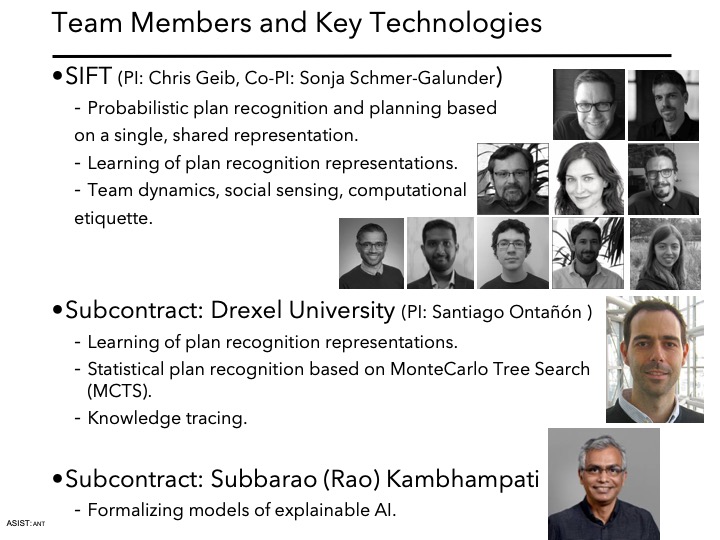ASIST: Artificial Social Intelligence for Successful Teams (ASIST)
Background:
Many of the attempts at building assistive systems and virtual teammates have failed because the software didn’t explicitly capture and reason about the user's Theory of Mind (ToM). For example, the famously flawed Microsoft help utility "Clippy the paperclip" was turned off by most users and utimately discontinued because it didn't correctly read and interprete social cues about when and how it should interrupt and provide assistance. For ToM to help such assistive systems it should capture and reason about a number of features of the users and their interactions including: beliefs about the state of the world and the other users, emotional state of the users, plans of the individual users and teams, and even the social and societal context of the users.
SIFT Approach:
SIFT is developing a flexible and reuseable approach to probabilistic ToM reasoning and an agent architecture supporting explicit ToM based on:
- learnable, probabilistic, formal action grammars,
- first order domain models of the world,
- probabilistic reasoning based on weighted model counting using models built using Monte-Carlo Tree Search,
- integration of low level activity recognition to create semantically significant observable events.
Benefits:
ASIST is focused on 1) better understanding ToM for social intelligence, and 2) developing synthetic agents capable of displaying ToM based social intelligence. Our main deliverable is an agent architecture that is able to support explicit models of ToM and reasoning about the ToM of the users of the system. As such, ASIST has the potential to revolutionize human user interactions with any and all computer mediated systems. The dream of true virtual teammates to assist us in controling our environement can't be realized until such artificial agents are able to understand our ToM and exhibit social intelligence.
Our system architecture:

ASISTant's information flow:

Our team structure:


